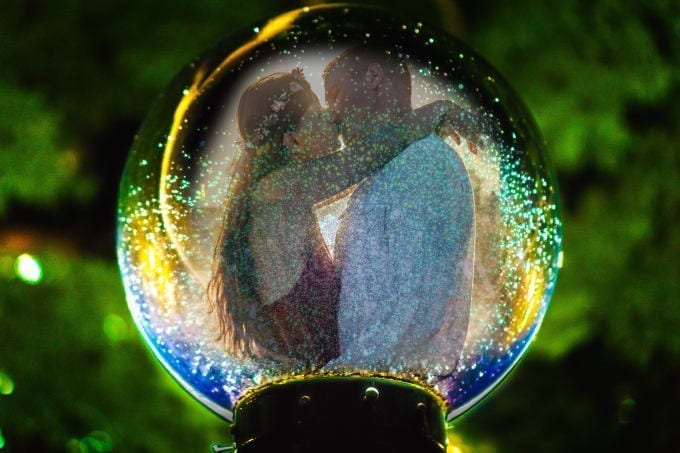If you want to learn to read a crystal ball, you can follow these steps and learn to read the crystal ball fast:
Start by thinking about the crystal ball being full of rainbow colors. Think about how the colors of the ball are turning into a mist and then open your eyes and look at the center of the ball and when you get a clearer image, turn the ball around in your hand and look at it again.
Crystal Ball Details
Sometimes, the image will have good details and sometimes it won’t. When you see goo details, this can be very exciting, and this is a stage you want to reach.
Have Confidence
When you are confident, focus on the image and see what words you think in your life. Record your session and write down anything that is weird or anything you can’t explain.
Try Again and Don’t Give Up
If you don’t see anything, it might be because you are not connected with physical senses. Look at the ball with your eyes open.
Then, close your eyes slowly and then open them slowly and blink. Look at the ball again and let the ball sense you.
Imperfections of the Ball
Use the imperfections of the ball to try to connect with the ball. Become more experienced and make a relationship with your ball so you can connect to it and ask questions.
Conclusion
Doing a crystal ball reading is not always easy. There are different steps that you can take to be able to get images to come to your crystal ball.
If you find that you are having a hard time connecting with your crystal ball and you are not getting images or messages that you hope to get, do not give up but try again. Keep trying until you see an image.
Doing crystal ball readings is not always easy and it takes time and practice just like with other gifting in order to be good at it.





I appreciate the article’s emphasis on not giving up. Perseverance is key in many aspects of life, including learning new skills like this one.
The article provides a clear step-by-step guide for beginners. However, I wonder if there are any scientific studies that back the effectiveness of such practices.
I agree with Monkey. While scientific evidence is important, the subjective nature of such practices might make it difficult to measure their effectiveness empirically.
It’s true that scientific validation could add credibility, but sometimes personal experiences and anecdotal evidence are also valuable.
The mention of using imperfections in the crystal ball as a tool for connection is quite intriguing. It suggests a deeper level of interaction than merely looking for clear images.
The advice to record sessions and write down unexplained phenomena is practical. It could help identify patterns or progress over time, which is essential for improvement.
The process described here seems quite methodical. I appreciate the emphasis on patience and practice, which are essential in mastering any new skill.
Comments are closed.